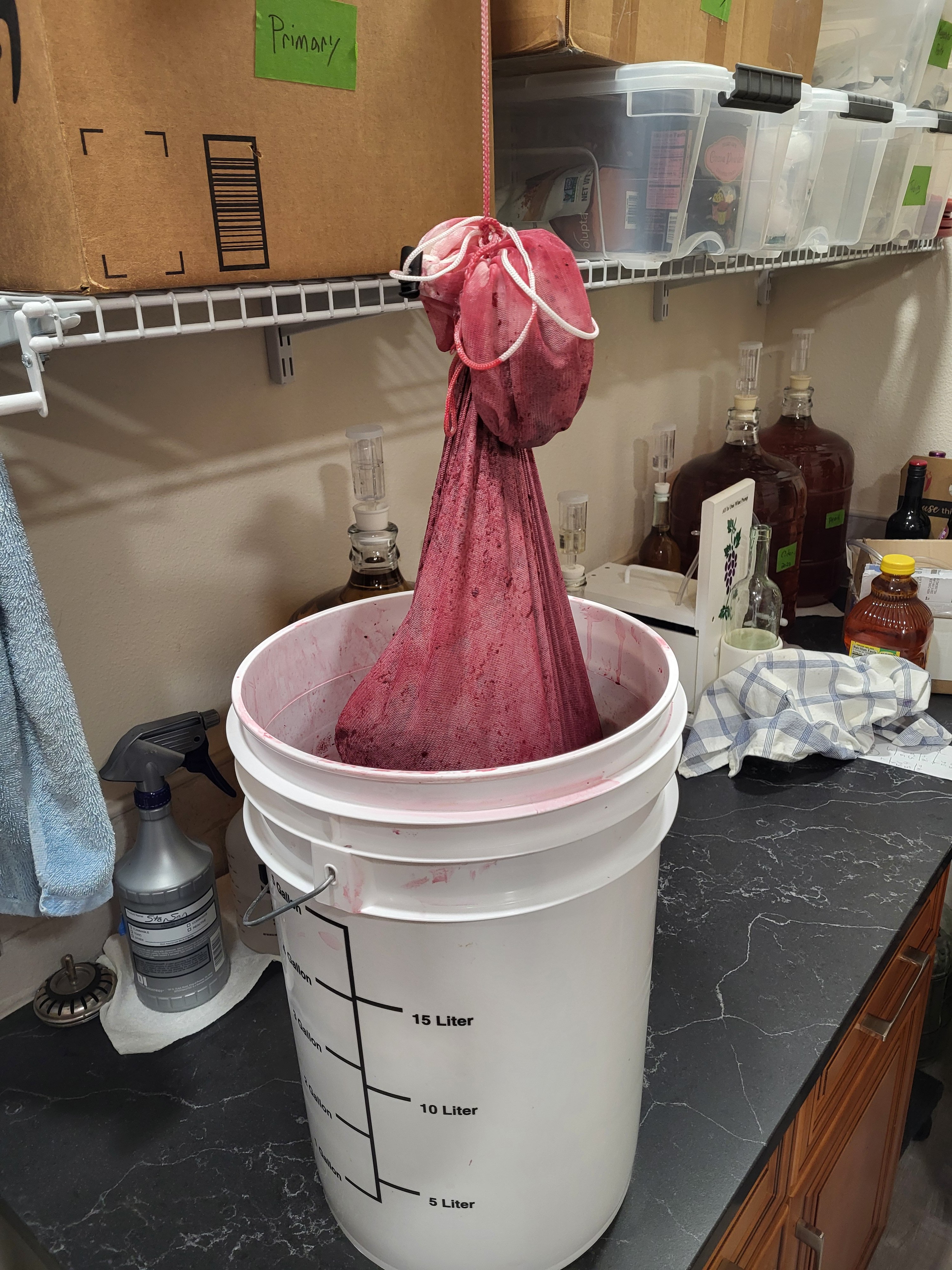Hi Wine Makers,
Not until recently have a discovered a whole new world of wine that changed the way I look at “wine”. Other than buying a wine kit, or ordering frozen grapes from who knows when, or you have your own vineyard, grape winemaking is tough to do. My fledgling vineyard has a year or two yet before I’ll get the quantity of grapes required for even a token 5 gallon year.
So I’ve discovered fruit wines. Fresh fruit is always more desirable over juice, I get that. But what I don’t get is the YouTube videos out there that show the use of strainer bags for the fruit. We press grapes, why not press the fruit and do the same process as grape made wine? All I see when they lift the bag of fruit out of the fermenter and thrown away is all that fruit juice that could be press out! Why not put the fruit right in the fermenter like we do for grapes, then pour it right into the press (into a paint strainer mesh bag of course) after primary is complete, get the free run juice then press the rest? The serious hard cider guys press apples, why not peaches, pears, mangoes and others?
Dave
Not until recently have a discovered a whole new world of wine that changed the way I look at “wine”. Other than buying a wine kit, or ordering frozen grapes from who knows when, or you have your own vineyard, grape winemaking is tough to do. My fledgling vineyard has a year or two yet before I’ll get the quantity of grapes required for even a token 5 gallon year.
So I’ve discovered fruit wines. Fresh fruit is always more desirable over juice, I get that. But what I don’t get is the YouTube videos out there that show the use of strainer bags for the fruit. We press grapes, why not press the fruit and do the same process as grape made wine? All I see when they lift the bag of fruit out of the fermenter and thrown away is all that fruit juice that could be press out! Why not put the fruit right in the fermenter like we do for grapes, then pour it right into the press (into a paint strainer mesh bag of course) after primary is complete, get the free run juice then press the rest? The serious hard cider guys press apples, why not peaches, pears, mangoes and others?
Dave
Last edited:











































![Craft A Brew - Safale S-04 Dry Yeast - Fermentis - English Ale Dry Yeast - For English and American Ales and Hard Apple Ciders - Ingredients for Home Brewing - Beer Making Supplies - [1 Pack]](https://m.media-amazon.com/images/I/41fVGNh6JfL._SL500_.jpg)














